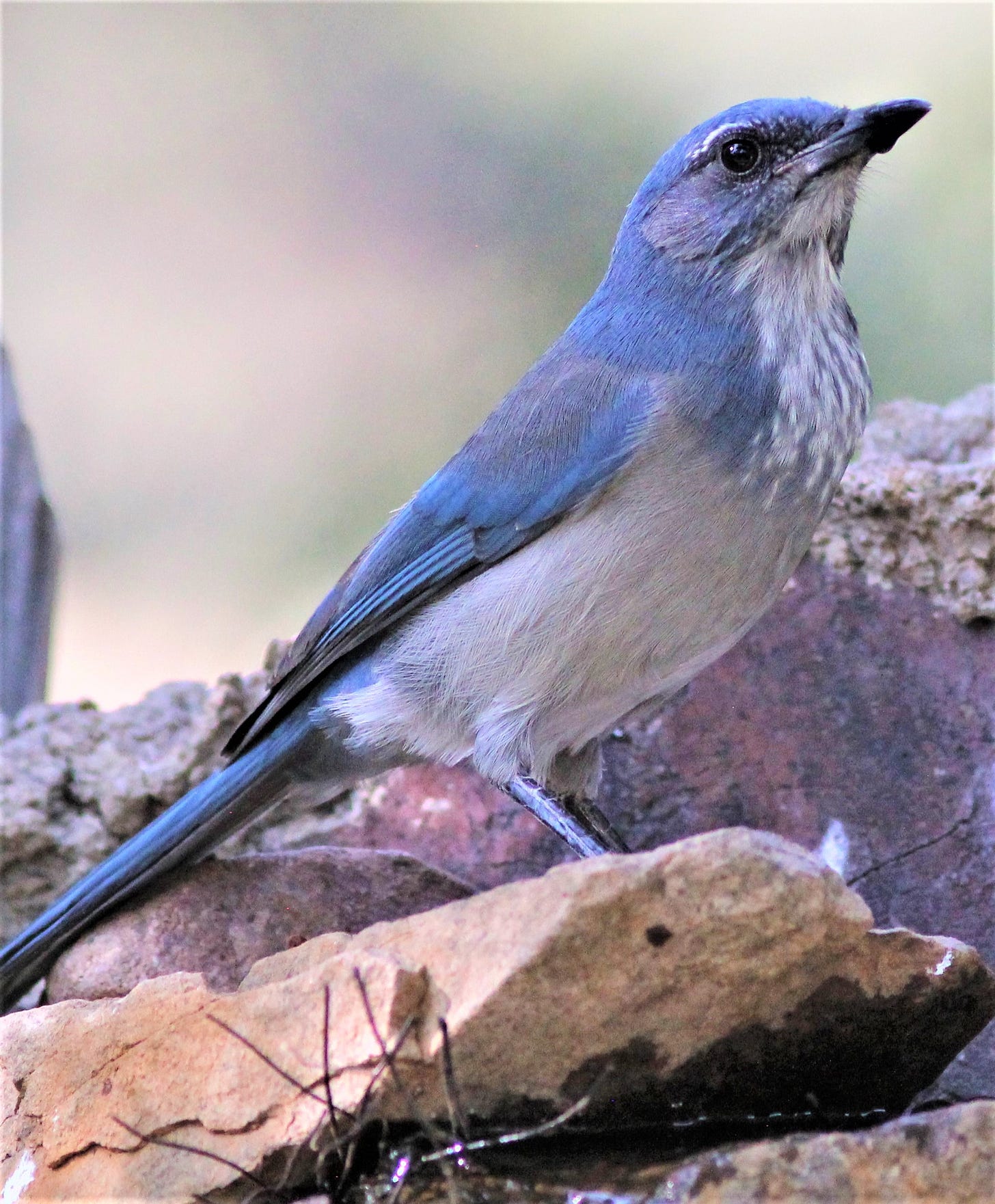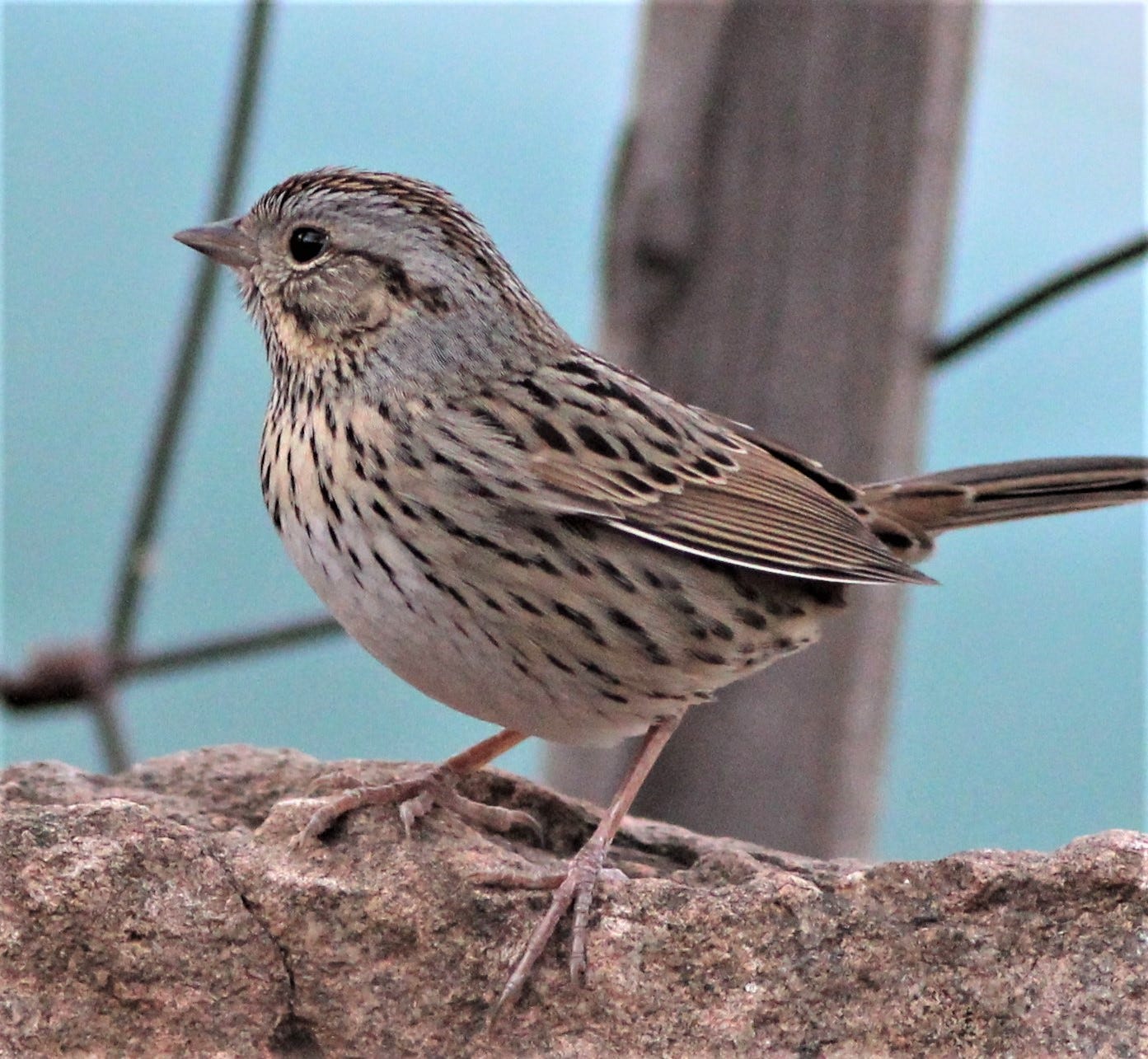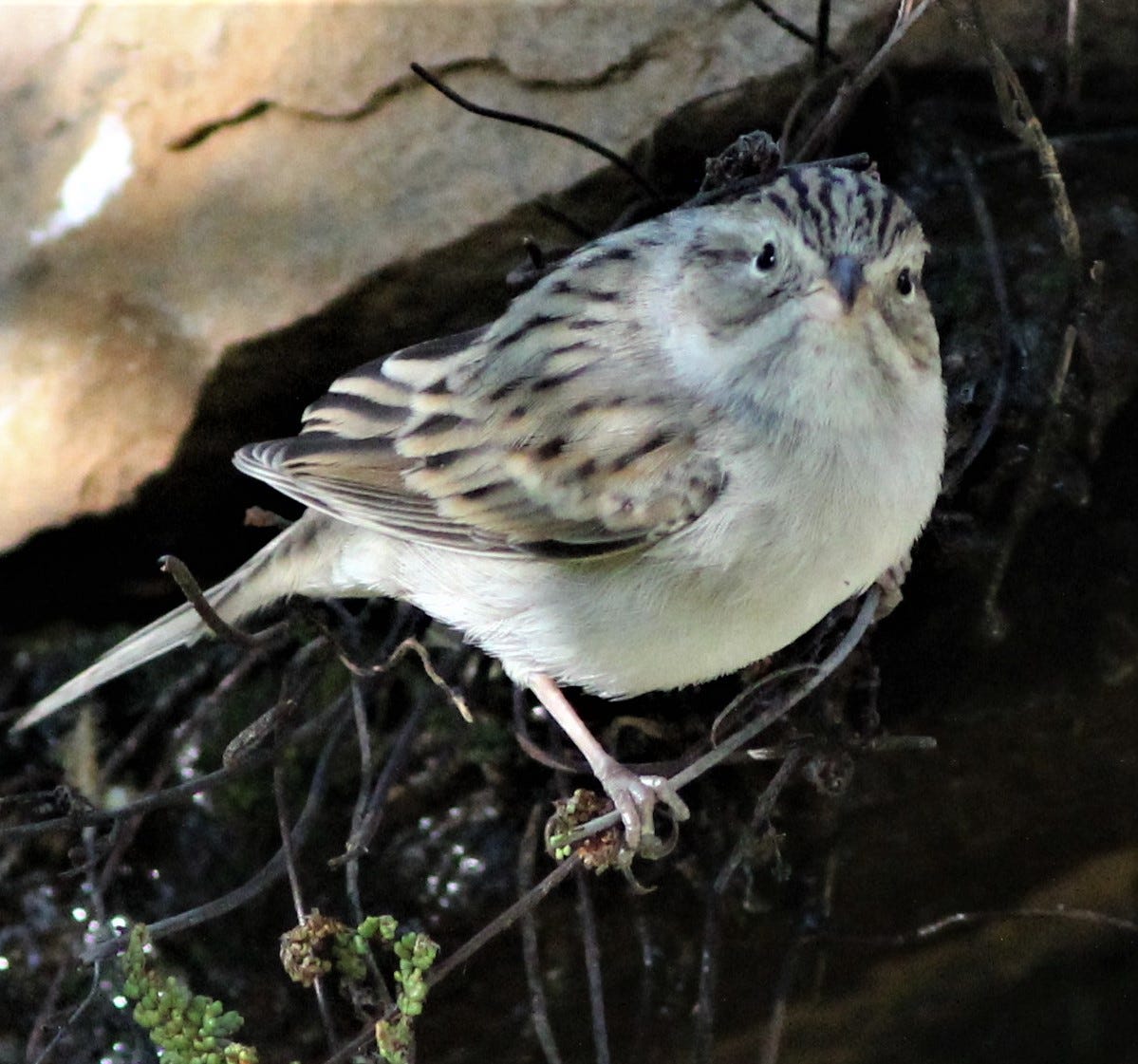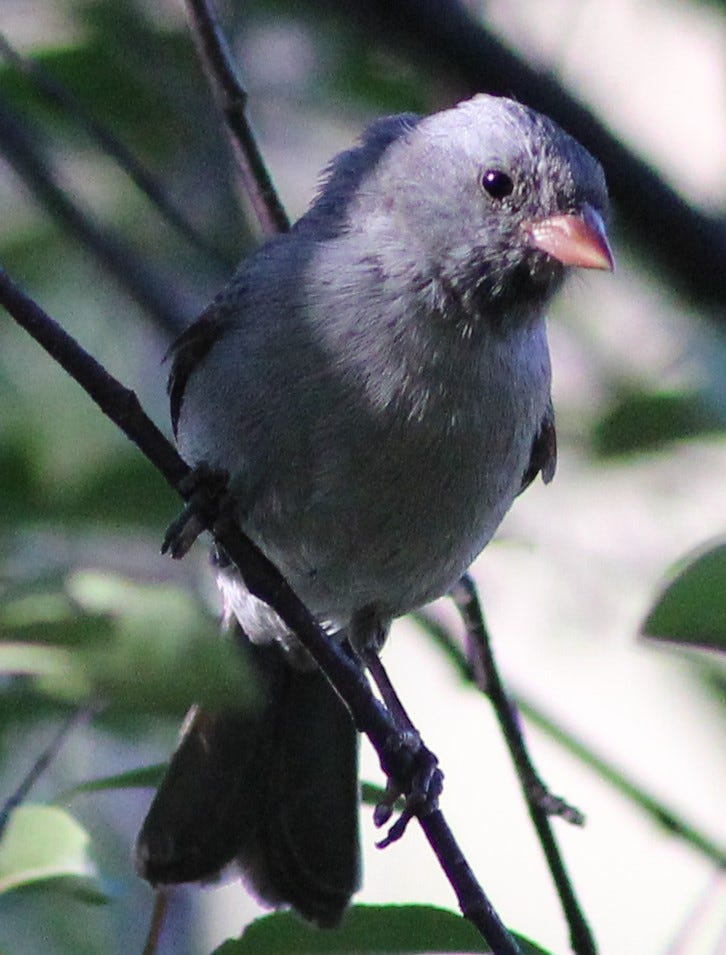
Day 202 of the Quarantine (October 2, 2020)
No rain in September as the monsoon season ends. And only 2.5 inches in August, normally our wettest month. The grass is brown. The hills are brown. My mood is brown. Even the oaks looked distressed. No wonder the Covid fountain has been so birdy. The well is pumping less than 100 gallons a day for two residences. I’m down to one shower a week, which suits me fine. I wear the same clothes, my “Same Shirt Different Day” t-shirt serving as a warning. Last week I had 4000 gallons of water trucked in, first time in six years.
While I’m checking levels in the water tank, two guys walk down my road. Ball caps, cargo pants, and long lenses. Birders. When I approach the gate, they say they’re looking for a black-chinned sparrow posted to eBird this morning. “Jason has never seen one,” one of them says and introduces himself as Kevin.
“I see one or two every morning,” I say. “You’re welcome to come in and sit for a while.”
We chat about birds. The two are from Oregon and have traveled to Arizona for our specialties like white-eared hummingbirds, which I verify are still in the Huachuca Mountains. They saw the eared quetzal yesterday. I tell them I was recently on the Oregon coast and saw my first pigeon guillemot and a nice Cassin’s auklet.
“The auklet is a great find,” Kevin says. “You saw it from shore?”
“Yes,” I reply, recalling that the birds normally remain out at sea. I don’t mention it had washed up with the tide.
The black-chinned sparrows don’t appear, but they both take photos of the juncos and sparrows, identifying Lincoln’s and chipping and Brewer’s. When a Woodhouse’s scrub-jay begins screaming from the apple tree and drops to the fountain for a drink, Jason gets an unexpected life bird as a consolation.
“I call it the Arizona scrub-jay,” I say, ranting how recently the AOU split what was formerly the western scrub-jay into two species, the California scrub-jay and the Woodhouse’s, named for Samuel Washington Woodhouse. He was a naturalist for the Sitgreaves’ expedition in 1849, I explain—the first naturalist in northern Arizona—described four birds new to science, was bitten in the hand by a rattlesnake he tried to catch, got shot in the leg by a Mojave arrow, then had all variety of flora and fauna named for him, including my favorite toad.
“But if you get the California scrub-jay where you live, we should get one named for Arizona. Woodhouse can keep the toad.”



Thanks for subscribing! More to come!





Maybe you should start an eFrog...just a thought 😉